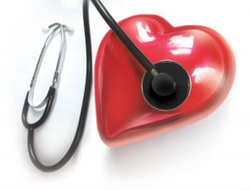Cardiovascular fitness: the basics
Published: April 17, 2020
Cardiovascular fitness refers to the ability of your heart, lungs, and muscles to use the oxygen that you breathe in more efficiently.
This allows you to undertake everyday activities more easily and have energy left over for when the going gets tough.
You can improve your cardiovascular fitness by performing regular aerobic activities.
Aerobic activities include walking, cycling, dancing, jogging, running, swimming or any activity in which you use large muscles such as those in your legs, to move your body for an extended period of time.
You can also improve your cardiovscular fitness with high intensity interval training (HIT) which is comprised of very short, but very intense periods of physical activity interspersed with longer low intensity exercise.
If your activity is aerobic, the activity should make you heart beat faster and you should be breathing more deeply, but you are able to talk or carry on a conversation with someone.
However, when doing more intense work outs you may perform anaerobic exercise where you may find it quite difficult to talk.
To improve your cardiovascular fitness (cardiovascular conditioning) you need to increase the intensity of your physical activity.
If you are not usually very active and sit for most of the day you can increase your activity by standing up and walking around for short periods of time (5-10 minutes).
As you are able to move more easily then you can increase the time that you are moving or increase the speed at which you move.
If you are already quite active then you may want to increase the intensity of your activity so that you will continue to improve your cardiovascular fitness.
For instance, if you walk for 30 minutes a day and usually walk the same distance each time, you can increase the distance that you walk, but try and do the new distance in 30 minutes.
This would be similar to increasing your walking speed from 4 km/hr to 5 km/hr.
Your body, particularly your heart, lungs and leg muscles, will need to work harder.
If you continue to walk at this rate every time you go out then your body will adapt to the increased demands and your cardiovascular fitness will increase.
Another way of increasing the intensity is to add some hills to your walk, run, or bike ride. If you dance, then dancing to faster music or dancing for longer will improve your cardiovascular fitness.
Whatever physical activity you do, you need to either work harder in the same amount of time or keep the same speed and work for longer.
One effect of improving your cardiovascular fitness is that overtime your heart needs to do less work to pump your blood around your body.
Physical activities will feel easier and when you do have to "run for the bus" you have the extra energy to do it, and you will recover from the burst of energy more quickly.
There are many health benefits to be gained from having good cardiovascular fitness:
- Stronger lung and heart function and blood circulation
- Decreased risk of heart disease
- Lower blood pressure
- Lower blood cholesterol
- Lower resting heart rate
There are other benefits associated with cardiovascular exercise and physical activity:
- May reduce intra-abdominal fat stores
- Improved self esteem
- Increased muscle strength
- Improved sleep
- Improved bone density
Why wait, get moving today and start reaping the benefits of a healthy and fit heart, lungs, and muscles. For an in-depth review of cardiovascular fitness follow the link to Cardiovascular Fitness.
References
1.
CSEP (2003).The Canadian Physical Activity, Fitness & Appraisal. Health Canada
2.
Corbin, C.B. & Lindsey, R. (1994). Concepts of Physical Fitness. Dubuque, IA: Wm. C. Brown Communications Inc.


